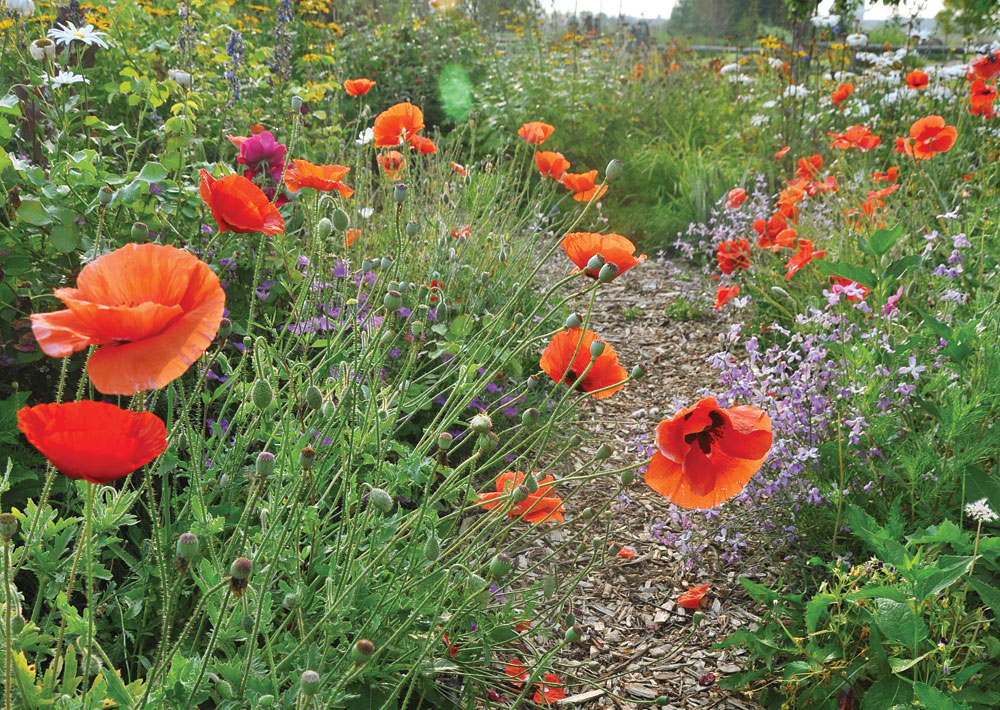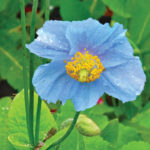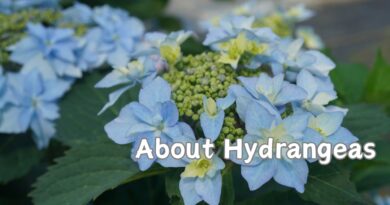Poppies Are Forever
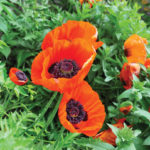
Graceful and fragile, brilliantly coloured and stunningly beautiful, poppies call irresistibly from any garden they inhabit. There are over 100 species but they all have the family charm, whether they are the flagrant, scarlet-and-black Orientals or the shy, six-inch alpines. Their silky petals, so delicately wrought, inspire wonder.
Undoubtedly, that is the job of those sultry petals – to inspire and attract, especially pollinators, although Papaver somniferum, the opium kind, native to eastern and SoutheastAsia, is pretty self-sufficient in the pollination business. This much-maligned opiate factory can actually self-pollinate, but it is not adverse to a little help from honey bees and flies.
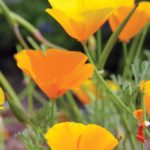
Other poppies flaunt their shining petals, inviting bees to partake of their protein-rich pollen. The golden, sometimes white, native North American poppy, Eschschoizia californica, also known as the California poppy, is particularly attractive to pollinators such as honey bees, bumble bees and the sweat bees, but most of their pollinating is done by accommodating beetles. (Incidentally, beetle pollination is called cantharophily.) The friendly ladybug is one of these pollinators, a welcome guest in any garden to help keep thrips and aphids under control. Butterflies also love the sweet nectar that poppies supply.
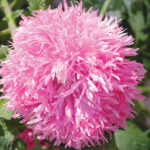
But back to the true poppy, the papavers; in addition to being the well-known manufactory of the opiates morphine, codeine and heroin, the annual P. somniferum is the plant from which we get edible poppy seeds for use in cakes, breads and other culinary delights. Poppy oil is also harvested and used in cooking, in salad dressings and in margarine. The oil is high in carbohydrates, calcium and protein. This is one useful plant – some of the oil is used to make paints and varnishes and cosmetics! It is not illegal to grow P. somniferum in Canada for ornamental purposes.
Across the globe, the pretty and prolific field poppy, P. rhoeas, also known as the Flanders poppy, spreads its red and black joy across the fields of Europe, where its seeds can sleep dormant in the soil for many years until disturbed. This is what happened in the First World War when ground artillery disturbance prompted an explosion of red poppies between the trenches, inspiring the poem “In Flanders Fields”.
This poppy does not produce narcotics but it is the source of a mild sedative known as rhoeadine, used by the Romans to ease the “pain of love”. It is currently being studied for use in the treatment of morphine addiction.
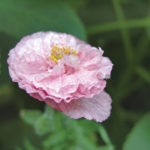
The annual field poppy has another claim to fame: it is the parent of the delightful Shirley poppy, so called because it was discovered in 1880 by Reverend William Wilks, vicar of the Parish of Shirley in England. The good vicar perfected its hybridization over many years. Shirley poppies are generally white, pink, lavender or red and have no black markings at their hearts, although they can come as doubles and some have bi-coloured petals. Indeed, the first Shirley poppy had a margin of white around its petals. Now some of the favourites are white with a red margin or the petals are mottled; some fade from white to pink and vice versa, and some petals are ruffled while others are smooth.

The glamorous Papaver orientale, the Oriental poppy, is a perennial. It has stunning silky, scarlet, white, salmon, orange, pink or plum petals set around a heart of blue-black pollen. Many varieties also have black blotches at the base of their petals. The flowers grow out of a mound of deeply cut, hairy leaves that die back after the plant has finished blooming. It produces showy seed heads that can be cut and dried for bouquets. The petals may be double or fringed, as in the scarlet ‘Turkenlouis’.
The Iceland poppy, Papaver nauticale, is also worth a mention. In spite of its name, it grows as a native in Europe, Asia, North America and the mountains of Central Asia, but it is not native to Iceland. A short-lived perennial, it has a long tap root, so resents being transplanted, and is best grown from seed in its permanent location. This poppy comes in yellow, orange, rose, pink, salmon, white and cream and there are some bi-colours. The centres are lovely circles of gold.

